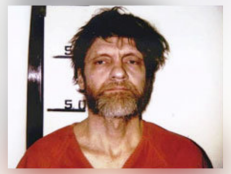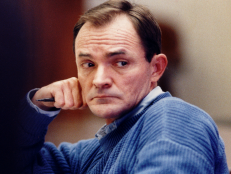Manson (1973) Official Movie Poster Promotional Image

Manson (1973), official movie poster/promotional image
In past installments of Serial Killer Cinema, we’ve looked at narrative films both directly based on Charles Manson and his homicidal hippie cult The Manson Family, as well as movies conceptually inspired by the sordid, blood-soaked saga.
Manson has, of course, provided infinite grist for documentary makers, as well. Most nonfiction portrayals and examinations of Charlie, the Family, and their infamous 1969 Tate-LaBianca murders have tended to be TV news productions.
The following quartet of documentaries delves deep into the Manson mystique as only a proper motion picture can. Beware: some heady trips lay ahead.
MANSON (1973)
“There are no actors in this film.” That’s the message announced onscreen at the start of Manson, a scrambled collection of interviews with Manson Family members, news footage, and psychedelic visual effects.
Directors Robert Hendrickson and Laurence Merrick shot extensively at Spahn Movie Ranch, the Manson Family’s headquarters. Lynette “Squeaky” Fromme and other shaved-head, shotgun-pumping female followers still living there spout rapturously about revolution and Charlie’s kingdom to come.
Manson actually nabbed an Academy Award nomination for Best Feature Documentary but lost to the extraordinary (and not entirely unrelated) Marjoe.
In 1976, Squeaky Fromme attempted to assassinate President Gerald Ford, prompting California authorities to order Manson temporarily removed from circulation in the state so as not to influence jury members. Distributors immediately, then, rushed it into theaters everywhere else, emblazoned with the bold tagline, “Banned in California!”
CHARLES MANSON SUPERSTAR (1989)
Charles Manson Superstar, directed by electronic musician and occultist provocateur Nikolas Schreck, consists almost entirely of a face-to-face interview with the title subject at California’s San Quentin state prison.
Charlie rants, raves, sings, strikes martial-arts poses, and shares a lot of thoughts about God, the devil, Hitler, Nixon, “Abraxas” (at whom he spits), and the fact that he can become a “beautiful woman.” Good luck trying to look away.
A lot of Manson’s babble is blackly amusing, but every so often he spouts off a real bone-chiller, such as when he asserts he exists everywhere at once, “even under the blade of the razor you use to shave in the morning.”
Schreck and his wife/creative partner, Zeena Schreck (née LaVey, the daughter of Church of Satan founder Anton LaVey) provide a sympathetic forum.
THE SIX DEGREES OF HELTER SKELTER (2009)
The Six Degrees of Helter Skelter is a you-are-there documentary “hosted” by Scott Michaels, a Hollywood tour guide who specializes in taking clients to celebrity death spots and crime scenes.
Michaels is an engaging, motormouthed oddball who clearly knows his stuff, as director Michael Dorsey’s cameras follow him from the Spahn Movie Ranch to the Cielo Drive home where the Manson Family massacred pregnant actress Sharon Tate and others party guests to … just about anywhere and everywhere else Charlie and company left their mark.
LIFE AFTER MANSON (2014)
Filmmaker Olivia Klaus’s up-close portrait of Manson acolyte and admitted murderer Patricia Krenwinkel earned a Best Documentary nomination at the Tribeca Film Festival. It’s not an easy one to shake off.
Shot behind bars, the film contrasts the warm, charitable, 67-year-old Krenwinkel onscreen with the 21-year-old homicidal maniac who committed many of the Tate-LaBianca massacres’ most outrageous atrocities, including carving the word “WAR” into the stomach of supermarket executive Leno LaBianca.
Life After Manson proves how much one person can evolve over time, but it doesn’t back down from reminding us that Krenwinkel savagely prevented other people from having that same opportunity.
Watch Investigation Discovery’s Manson: The Prison Tapes on ID GO now!


![A Feb. 1980 police mug shot of murder suspect Ted Bundy [left]; Charles M. Manson, charged in the killings of actress Sharon Tate and six others, walks to courtroom in Los Angeles, Feb. 10, 1970 [right].](http://investigationdiscovery.sndimg.com/content/dam/images/investigationdiscovery/crimefeed/legacy/2023/11/AP-ted-bundy-8002010117-AP-charles-manson-700210083.png.rend.hgtvcom.231.174.suffix/1699989081947.png)






